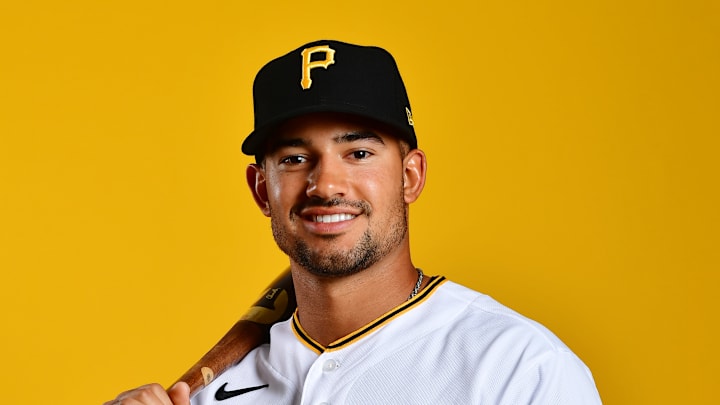Nick Gonzales
Yes, I am still on the Nick Gonzales bandwagon, and no, I’m not going to stop. Gonzales has fallen in the eyes of many prospect aggregates, especially in FanGraphs’ eyes. They dropped him all the way to the team’s 23rd-best prospect (granted, there are more issues with FanGraphs’ list, such as ranking Ricky DeVito over Jun-Seok Shim and Anthony Solometo, despite being objectively better prospects). Sure, there are some valid criticisms about Gonzales, but many aren’t nearly as bad as some make it out to be.
While Gonzales fell in most rankings, he still had a quality season, batting .263/.383/.429 with a .365 wOBA and 127 wRC+. Gonzales had a solid .166 isolated slugging percentage and walked at a healthy 13.6% rate. But where Gonzales struggled (and where many see his flaws) is with strikeouts. He K’d in 28.5% of his plate appearances last year.
However, his strikeout rate isn’t as bad as it seems. Gonzales started the year off ice cold. From mid-May through the end of the year, Gonzales batted .302/.412/.512 with a .405 wOBA and 152 wRC+. This time around, he had a 13.3% walk rate but a much more manageable 23.7% strikeout rate. Granted, it was 211 plate appearances, as he missed all of June and July, but he was still much better during this stretch.
Once Gonzales returned during the first week of August, his strikeout rate decreased even further to 22.7%. Then, in the final month of the minor league season, the second base prospect had a strikeout rate of just 20.7%. Of course, that’s even a smaller sample size of 141 and 111 plate appearances, but still an encouraging one nonetheless. In the Arizona Fall League, he had just a 20.8% K-rate when the average was 23.3%. Overall, he ranked 22nd out of 61 players in Arizona.
Gonzales has seen a few games at shortstop and played some hot corner in the AFL, but second base is his home through and through. He may see a game here and there at short and third, but he’s going to spend almost all his time at the keystone, where he grades out as a solid defender. He’s also a decent base runner.
Gonzales is still a good prospect and one that’s now overlooked. While the Pittsburgh Pirates have other second base-capable youngsters, including Rodolfo Castro, who is projected to be the regular second base to open the year, Gonzales could take over the role in 2023. The two things he needs are to stay healthy and keep producing as he did in May-September 2022 and at the AFL but at Triple-A Indy.
